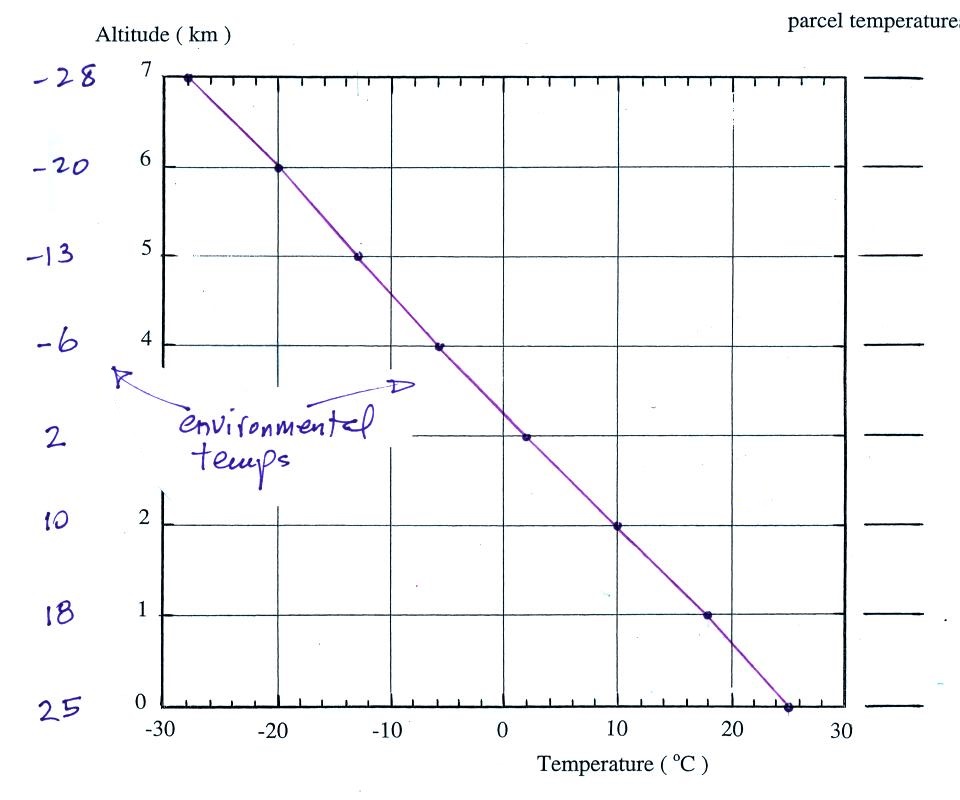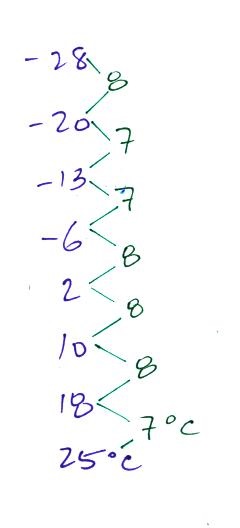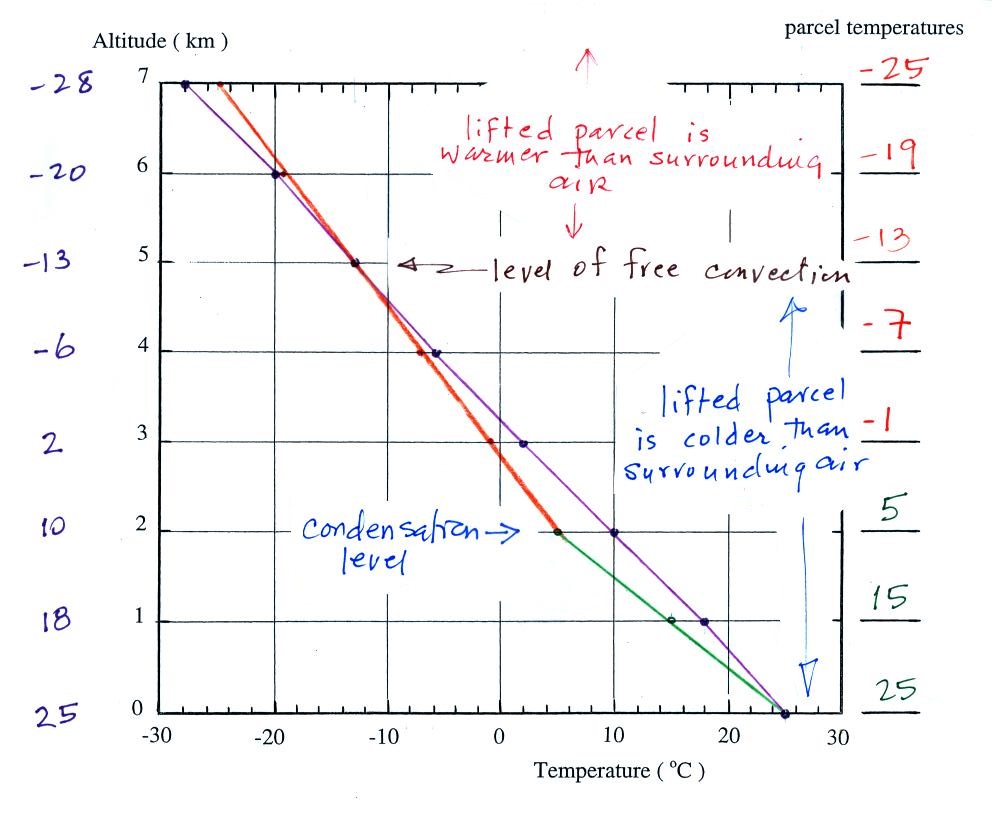
All you have to do is to plot the numbers
on the graph. One problem may have been realizing
that the environmental temperature is just the temperature of
the atmosphere at different altitudes.
2. In this second question you were supposed to determine the average environmental lapse rate. That is the average rate of decrease of environmental temperature with altitude. There are a couple of ways of doing this.
(a) First you could list the decrease kilometer by kilometer. This is shown below.

Temperature drops 7 C in the first kilometer, 8 C in the
second kilometer etc. Then add all of the values
together and divide by 7:
4 The condensation level is 2 km. That is the altitude at which the lifted parcel had cooled to its dewpoint (5 C) and became saturated. A cloud would become visible at that point.
5. The level of free convection is 5 km. The temperature of the air in the lifted parcel is colder than the surrounding air at altitude below 5 km. Once lifted above 5 km the temperature of the air in the parcel finds itself warmer than the surroundings. The parcel would begin to rise on its own at this point (because it is warmer and less dense than the surrounding air).
2. In this second question you were supposed to determine the average environmental lapse rate. That is the average rate of decrease of environmental temperature with altitude. There are a couple of ways of doing this.
(a) First you could list the decrease kilometer by kilometer. This is shown below.

(7 + 8 + 8 + 8 + 7
+ 7 + 8) / 7 = 53 C / 7 km = 7.57 C/km
(b) The other way is to compute
the overall temperature change ΔT = (-28 C - 25 C) =
-53 C and divide that by the distance
over which the change occurs Δz = 7 km
over which the change occurs Δz = 7 km
ΔT / Δz
= - 53 C / 7 km = - 7.57 C/km
The negative sign is just telling
you that temperature is decreasing with increasing
altitude.
3. Probably the
hardest question on the assignment. You imagine
taking some of the 25 C air at ground level and then
lifting it upward. As it rises it will expand
and cool. How quickly it cools depends on
whether the air is saturated or not. The air at
ground level is unsaturated; unsaturated air cools at
a rate of 10 C/km.
Thus the 25 C air will cool to 15 C when lifted to 1 km and then drop another 10 C to 5 C by the time it reaches 2 km altitude.
The assignment states that the air becomes saturated when it reaches 5 C. That occurs at 2 km. Saturated air cools at a rate of 6 C/km on average. Thus the 5 C air will cool to -1 C when it rises from 2 to 3 km. It will cool another 6 C, from -1 to -7
C when it travels from 3 to 4 km.
The temperature of the lifted parcel of air is listed at the right side of the figure below and drawn on the graph.

Thus the 25 C air will cool to 15 C when lifted to 1 km and then drop another 10 C to 5 C by the time it reaches 2 km altitude.
The assignment states that the air becomes saturated when it reaches 5 C. That occurs at 2 km. Saturated air cools at a rate of 6 C/km on average. Thus the 5 C air will cool to -1 C when it rises from 2 to 3 km. It will cool another 6 C, from -1 to -7
C when it travels from 3 to 4 km.
The temperature of the lifted parcel of air is listed at the right side of the figure below and drawn on the graph.

4 The condensation level is 2 km. That is the altitude at which the lifted parcel had cooled to its dewpoint (5 C) and became saturated. A cloud would become visible at that point.
5. The level of free convection is 5 km. The temperature of the air in the lifted parcel is colder than the surrounding air at altitude below 5 km. Once lifted above 5 km the temperature of the air in the parcel finds itself warmer than the surroundings. The parcel would begin to rise on its own at this point (because it is warmer and less dense than the surrounding air).